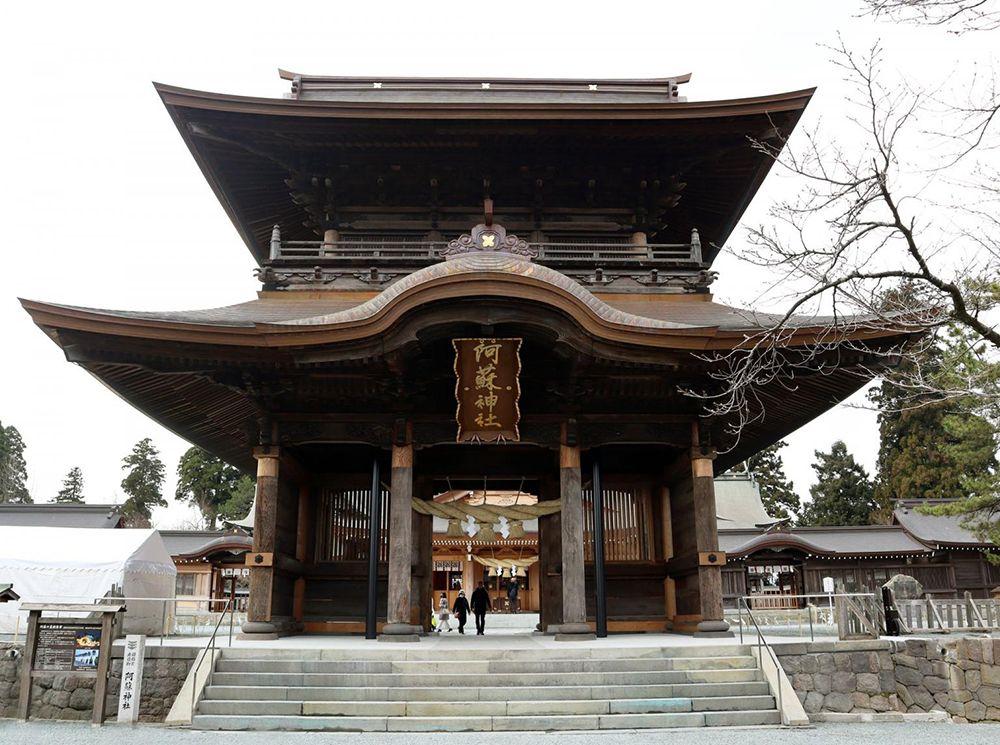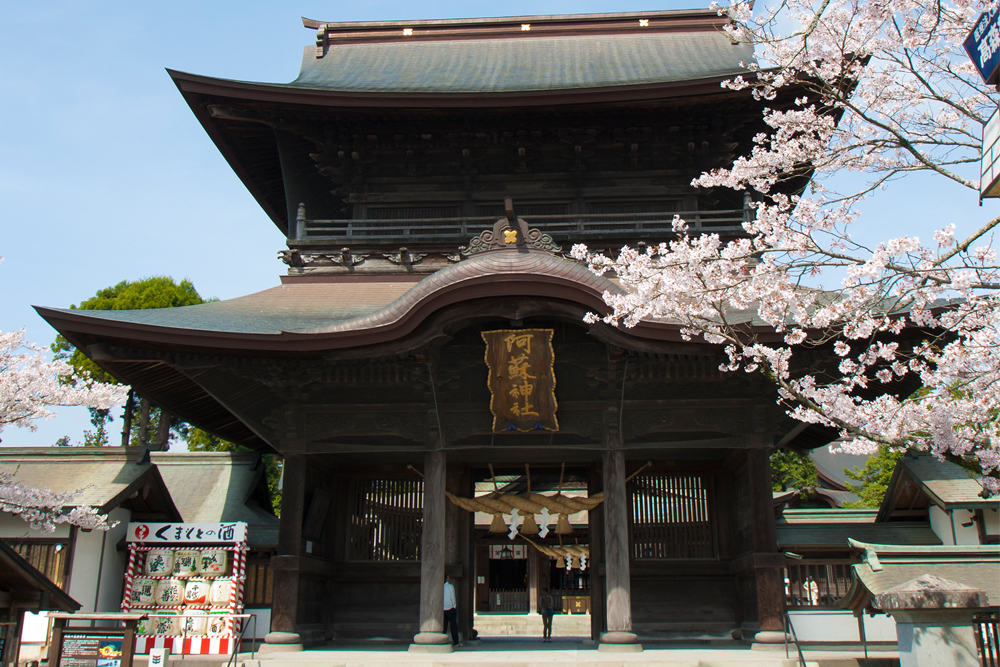


Mount Aso Shrine
Worship at the foot of the world's largest active volcano caldera.
Aso Shrine in Kumamoto has a history of over 2,500 years and is dedicated to the kami who created the Aso region, a deity of pioneering and agriculture.
History of the Shrine
Aso Shrine is one of Japan's most ancient, with legends stating its founding during the reign of the 7th Emperor, Korei. It is dedicated to Takeiwatatsu-no-mikoto, a grandson of Japan's mythical first emperor, Jimmu. Legend says that Takeiwatatsu was sent to govern this region. Finding a vast lake filling the Aso caldera, he kicked open the side of the caldera wall, draining the water to create the fertile plains where people could live and cultivate rice. This powerful act of creation established him as the great pioneering kami of the land.
The shrine has been the primary center of worship for the Aso region for millennia. Unfortunately, in 2016, the shrine suffered catastrophic damage in the Kumamoto earthquakes. The iconic two-story Romon gate, a nationally designated Important Cultural Property, and the main worship hall completely collapsed. A massive, multi-year reconstruction effort, funded by donations from all over Japan, is currently underway, symbolizing the resilience of the local community and their deep devotion to their guardian kami.
The Enshrined Kami
Takeiwatatsu-no-mikoto is the pioneering kami of Aso. As the legendary figure who kicked open the caldera to create the plains, he is a god of reclamation, agriculture, and development. He represents the power to transform a harsh natural environment into a place where humans can thrive.
He is worshipped as a great protector of the land and its people, particularly for blessings related to farming and new endeavors. The community's dedication to rebuilding his shrine after the earthquake demonstrates the deep and enduring faith in his protective power.
What to See
Prior to the earthquake, the shrine's most impressive feature was its massive Romon gate, one of the largest in Japan. The main approach is also unique as it runs parallel to the main hall, rather than leading directly to it. Several sub-shrines are scattered around the grounds, including one for prayers for marriage.
A famous and unique object of worship at the shrine is the 'Negaigoto-ishi', a sacred stone that visitors are encouraged to stroke three times while making a wish. Currently, visitors can observe the painstaking reconstruction work in progress and contribute to the rebuilding fund, becoming part of the shrine's modern history.
Major Festivals
The shrine is known for a series of agricultural rituals collectively known as the 'Aso no Noukousai'. The 'Onda Matsuri' in July is particularly famous. It is a rice planting festival where people parade through the streets with portable shrines, and women dressed in white carry offerings of rice seedlings to be planted in the sacred paddy, a prayer for a rich harvest. Another ritual, the 'Hifuri Shinji', is a fire-swinging ritual to pray for a good marriage and fertility.
Support Mount Aso Shrine
Your participation helps preserve this sacred site for future generations. Every digital offering contributes to real shrine preservation efforts across Japan.
By making an offering, you become part of a global community honoring Japanese spiritual traditions and supporting the cultural heritage that has been cherished for centuries.